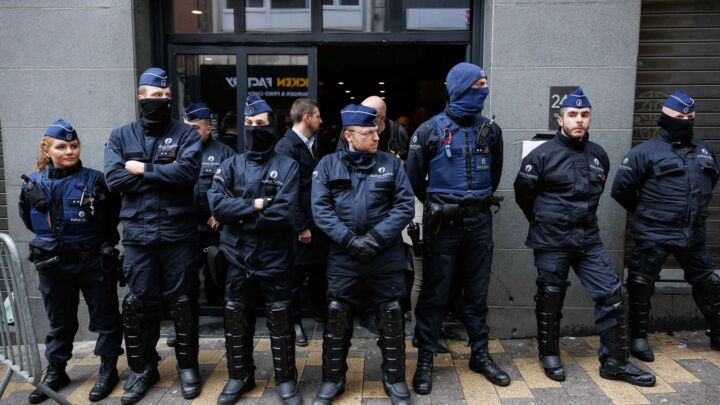A brick of a film
Sarah Gavron's adaptation of Monica Ali's Brick Lane studiously avoids stoking controversy and offers only sloppy stereotypes instead.

The magazine listings have awarded few stars to Brick Lane, the film adaptation of Monica Ali’s eponymous Booker Prize-nominated novel. The lack of praise is mostly explained by director Sarah Gavron’s poor adaptation of a novel which, containing few location shifts and recounting mostly the inner life of a withdrawn woman, is certainly difficult to bring to life on the big screen. Yet the film, which has been shrouded in controversy, is not just a politically and artistically cautious adaptation – it also retains the dullness, soppy sentimentality and shallow symbolism that imbued Ali’s novel.
Brick Lane recounts the claustrophobic and tedious life of Nazneen, a thirtysomething Bangladeshi woman who arrived in London in her teens after being married off to Chanu, an overweight, self-important man afflicted with corns on his feet. The pivotal change in Nazneen’s routine life, which consists of little more than cleaning and cooking for Chanu and their two daughters, comes in the form of a sewing machine. With this she turns the fabrics that a young man named Karim delivers to her and other cooped-up housewives into jeans and glittery tops. Romance strikes and Nazneen and Karim start a love affair, which coincides with his, and other young East Londoners’, turn towards radical Islam post-9/11.
Before it was even completed, the film version of Brick Lane was dubbed controversial, offensive and daring. During its filming in the summer of 2006, it inspired a public war of words between Salman Rushdie and Germaine Greer, statements of support from the pro-free speech group English PEN, and threats of book burning by a few cranky East London residents.
The hordes of angry young men that newspapers at the time warned might descend on Brick Lane to protest against the film never arrived. Instead, the much-publicised ‘Battle of Brick Lane’, despite being referred to at the time as a potential repeat of the protests around Rushdie’s The Satanic Verses, was a rather pathetic demonstration by a few short-tempered, placard-waving, middle-aged men (see The battle of Brick Lane, by Nathalie Rothschild). These self-appointed community leaders had little support, yet in the end were given unfounded power to dictate what can and cannot be said by authors and filmmakers. The film production company ended up taking advice from the local council and the police to relocate, so some scenes in the film were shot in different parts of London.
A few fake street signs and clever angles are enough to make a scene look authentic; after all, many a Asian rice field, European military hospital and New York street corner have been shot in imaginatively transformed Hollywood studios. The problem is not that a few cranky protesters denied cinemagoers the opportunity to see images of the real Brick Lane, but that the council, the police and the filmmakers gave in to their weak threats.
It is understandable that the production company took seriously the physical threats to the film crew, which included some children, but in taking on this novel, Gavron must have been all too aware of the offence her film might cause to a small, vocal minority. The film itself is bland and utterly uncontroversial.
It waters down the physical repulsion that Nazneen feels towards Chanu, the domestic violence, the sex scenes and the tragic fate of Nazneen’s sister whose letters from home convey a less than rosy picture of Bangladesh. Instead of the cataclysmic scenes towards the end of the book, in which Nazneen chases her eldest daughter through riot-ridden streets, the chase in the film is set against a bustling throng of tourists and congested London roads. In short, the features of the book that were the most obviously ‘controversial’, which some locals said they felt most offended by, have been significantly toned down.
The film uses simplistic devices such as contrasting drab council estates with flashbacks to an over-idealised childhood where Nazneen and her sister play happily and freely in fields and rivers surrounding their Bangladeshi village. As for Karim’s gradual turn towards fundamentalism, it basically involves him taking an interest in Islamic internet sites and addressing Muslim meetings. When, at the end of the film, Karim’s beard is fully grown and he has started wearing traditional clothes while manning an Islamic bookstall, the message is that he is now officially ‘radicalised’ and, who knows, might even be ready to blow up some infidels.
The film, like the book, is supposed to be a portrayal of East London from Nazneen’s perspective, yet the film plays down the secondary characters to such an extent that it fails to say anything meaningful about them – or about London – at all. Instead, the film is just a stereotype-strewn story of one woman’s small, personal liberation. It might have been useful to convey that when young Muslim Brits take on ready symbols like beards and traditional clothes, it is more often than not an expression of identity politics rather than any threatening ‘radicalisation’. But the film uses these symbols in an even more shallow way – to convey easily recognisable signifiers to the audience.
As with the filming of it, the release of Brick Lane was accompanied by controversy. When the Royal Film Performance was cancelled in September, officials said it was because the date no longer fitted Prince Charles’ schedule. But it was widely assumed that the cancellation was due to fear of protests which might put our future king in danger. In the end, the blandness of Brick Lane, and the conspicuous absence of the feared mob of offended ethnic minority members, only reiterates the pointlessness of all the fuss and controversy stirred up around the book and the film.
Nathalie Rothschild is commissioning editor at spiked.
Read on:
spiked-issue: Film .
To enquire about republishing spiked’s content, a right to reply or to request a correction, please contact the managing editor, Viv Regan.







Comments
Want to join the conversation?
Only spiked supporters and patrons, who donate regularly to us, can comment on our articles.